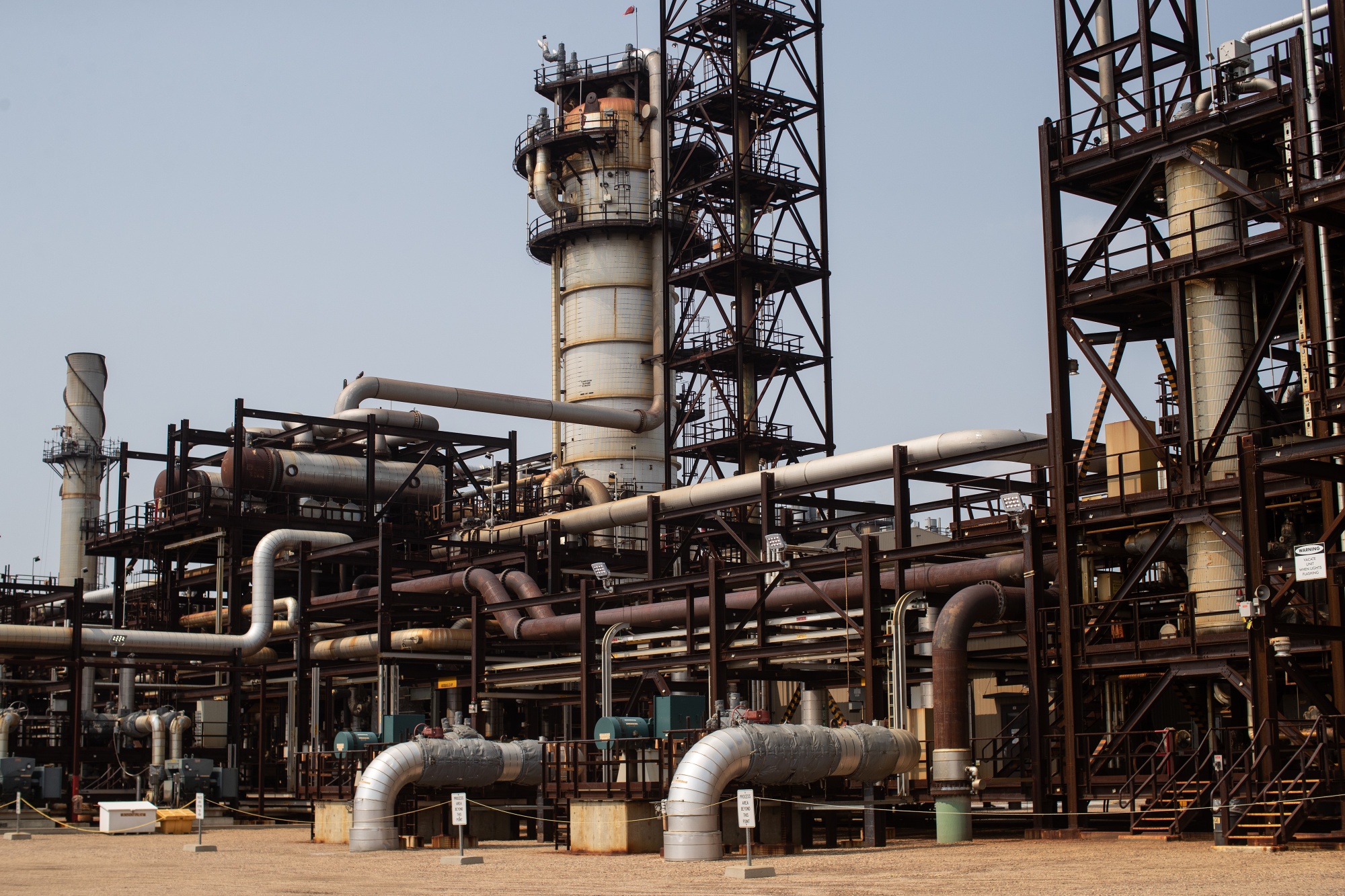Carney’s Oil-Export Gambit Hinges on Fixing Broken Carbon Market
(Bloomberg) -- Prime Minister Mark Carney said his government is negotiating an agreement with Alberta that “creates necessary conditions” for the future construction of a new oil pipeline to Canada’s west coast.
A project that allows western Canada to ship crude via tanker to overseas markets is one of the main requests of Alberta Premier Danielle Smith and many of the citizens of her province. But while Carney and Smith are expected to shake hands on a deal on Thursday, the prime minister made clear there’s a lot more work to do before any new pipeline can proceed.
“We believe the government of British Columbia has to agree,” Carney said, speaking in Parliament. “We believe that First Nations right-holders in this country have to agree.” So far, the government of BC is firmly opposed to the idea and so are some Indigenous groups in that province.
Carney’s government has also insisted on another major condition during negotiations with Alberta: fixing the industrial carbon pricing market. The document will commit both the federal and provincial governments to creating a more stable and predictable industrial carbon price, according to people familiar with the discussions.
The federal government’s view is that a higher price on carbon is necessary to drive businesses to invest in technology that reduces emissions, the people said.

Alberta has had an industrial carbon market for years. But it’s broken.
The price of credits and offsets in Alberta’s carbon market, known as the TIER system, has collapsed to about C$18 ($13) per metric ton, said Albert Ho, manager of the TIER business line at Carbon Assessors, a price tracker. That’s about a fifth of the effective carbon price of C$95 a ton.
The result is that there’s little incentive for companies to pay up for green technology, because it doesn’t generate enough revenue.
A higher industrial carbon price is key for Carney because he has watered down, eliminated or suggested he would scrap many of the environmental policies of his predecessor, Justin Trudeau — including a consumer carbon tax and a cap on oil and gas emissions.
Pathways Plus
The single largest pollution-curbing investment for Canada’s vast oil and gas sector is called Pathways, a mega-project that involves capturing carbon dioxide from oil sites and transporting it down a pipeline for injection underground near Cold Lake, near the center of Alberta’s eastern border with Saskatchewan.
Owned by major oil sands producers, it’s expected to cost C$16.5 billion, according to the Alberta government.
Smith has said building both the pipeline and the Pathways project together is a “grand bargain.” The federal government has termed this quid pro quo as “Pathways Plus Pipeline,” and has ordered its Major Projects Office to examine the feasibility of getting it all built.
But the collapse in carbon credit prices has undermined the already-difficult economics of Pathways. Oil companies want government guarantees for a carbon prices to support the investment in pollution control.
“We are in a very good spot,” Alberta cabinet minister Jason Nixon said at a news conference Tuesday. “There has been a lot of work done. I think we will be pleasantly surprised shortly on the work done between Premier Smith and Prime Minister Carney.”
There are several reasons for the weak carbon credit price in Alberta.
Large industrial emitters such as oil sands companies use credits that they generate or purchase on the market to meet part of their carbon tax obligations.
But the pace of emissions cuts was so fast over the past few years, largely because of a phase-out of coal for power generation, that a surplus of credits developed equal to 60 million metric tons of greenhouse gas emissions, according to a recent report by Foundation Economics.
Over the past year, the federal and Albertan governments took further steps that have undermined Canada’s carbon markets. In March, in one of his first acts as prime minister, Carney suspended the consumer carbon tax. And in May, Alberta froze the province’s industrial carbon tax at C$95 a ton and later began allowing large industrial companies to make other investments instead of participating directly in the carbon market.
“They’ve taken multiple actions this year that have the effect of weakening the carbon pricing system,” said Michael Bernstein, CEO of Clean Prosperity, a low-carbon economy advocacy group.
“The core part of the challenge right now is getting the supply and demand in markets like Alberta to balance so that emitters and investors have confidence that they’re going to get good value for the credits they generate from reducing emissions,” Bernstein said. “That’s the essential piece, and you just can’t provide that certainty without having some sort of contract for difference, or similar mechanisms.”
Carney’s fiscal plan earlier this month said carbon markets are “not functioning as well as they should be,” and said government will apply better federal benchmarking across provinces, and work on a nationwide pricing trajectory to target net zero by 2050.
Crucially, it also says Canada will fund more contracts for difference via the Canada Growth Fund. These are effectively insurance, where the arm’s-length government agency guarantees to pay the shortfall if carbon market prices don’t reach previously targeted levels.
©2025 Bloomberg L.P.





